Sibling Rivalry: Which AP Racing Radi-CAL is Right for Me, the CP9660/1 or CP9668/9?
07.11.2018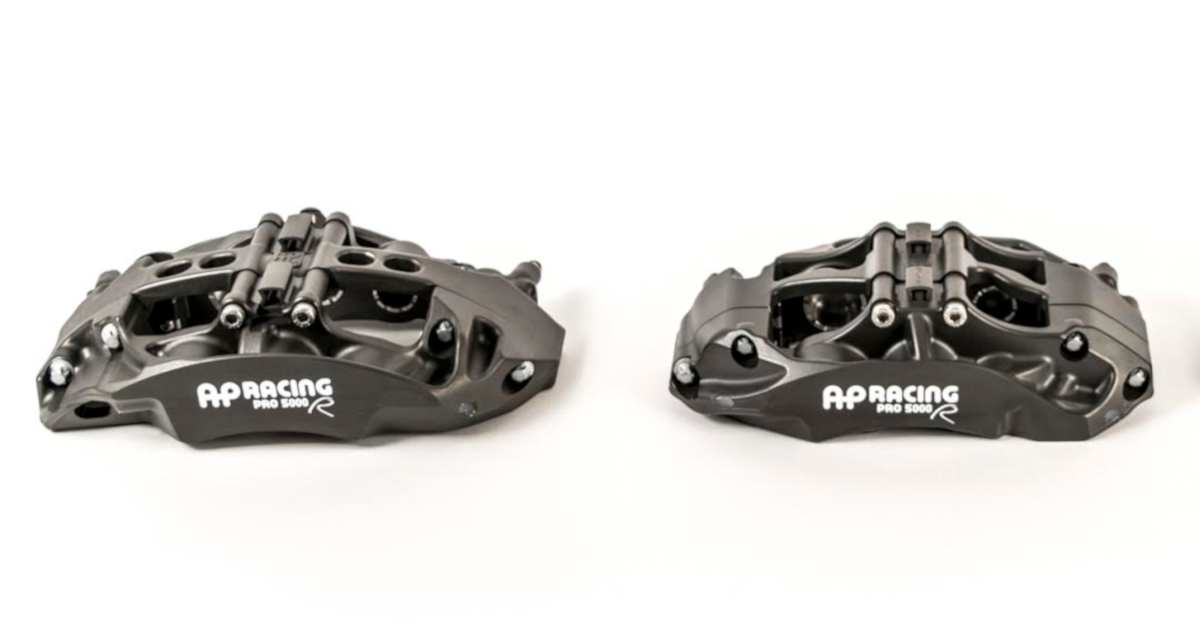
When considering one of our front AP Racing by Essex Radi-CAL Competition Brake Kits, our customers many times have the choice between two fantastic Radi-CAL six piston calipers: the CP9660 and the CP9668 (or the CP9661 vs. the CP9669 in the Porsche, McLaren, and VW markets). Both calipers offer unique benefits, but understanding the precise differences between them can be a bit confusing. We've created this guide to help you decide which option most closely matches your needs.
The CP9660 and CP9668 both stem from AP Racing's vaunted Radi-CAL design language, which creates an asymmetrical caliper that is dynamically stiffer, lighter weight, and cooler-running than conventional caliper designs of the past (for an in-depth look at the Radi-CAL concept, please be sure to check out the video and article, "The AP Racing Radi-CAL Story" ). During the early years following the Radi-CAL's introduction, the requisite manufacturing process made them prohibitively expensive for the common enthusiast, and ensured that they could only be found at the elite level of motorsport. However, ensuing advances in forging techniques over the next seven years spawned the Pro5000R caliper line, and finally brought the exclusive Radi-CAL design within the grasp of the common enthusiast. The CP9660 and CP9668 and their derivatives form the backbone of AP's Pro5000R range of forged, two-piece Radi-CALs.
The 9660 and 9668 share many similarities, including a close visual resemblance. Both are forged, two-piece designs with a removable bridge for quick and simple pad changes. They share the same ventilated stainless steel, domed-back pistons with anti-knockback springs, and high temperature, low drag internal piston seals. Piston bore sizes are the same (27mmx2, 31.8mmx2, 38.1mmx2), and both calipers have a hard anodized finish. They also feature internal fluid porting that eliminates an external fluid crossover pipe, and they each have only two inner, and no outer, bleed screws. The two designs also use the same pad backing plate shape, and share the same 180mm mounting centers and 42mm mounting offset on the inner caliper halves. They run on discs of similar size, but that's where the two designs diverge a bit.
In the Porsche, McLaren, and VW markets, we replace the CP9660 and CP9668 with the CP9661 and CP9669 as our two front Competition Brake Kit caliper options in order to maintain proper brake bias. The CP9661 is our smaller piston variant of the CP9660, while the CP9669 is the small bore equivalent of the CP9668.
The primary difference between the 9660/1 and 9668/9 is width. Even though the mounting offset on both calipers is the same (making them interchangeable on the same disc), both halves of the 9660 are narrower than those of the 9668. When installed on the same disc as the 9660, the 9668 will sit 11mm further inboard, while also extending 14mm further outward towards the wheel spokes.
CP9668 on the left, CP9660 on the right.
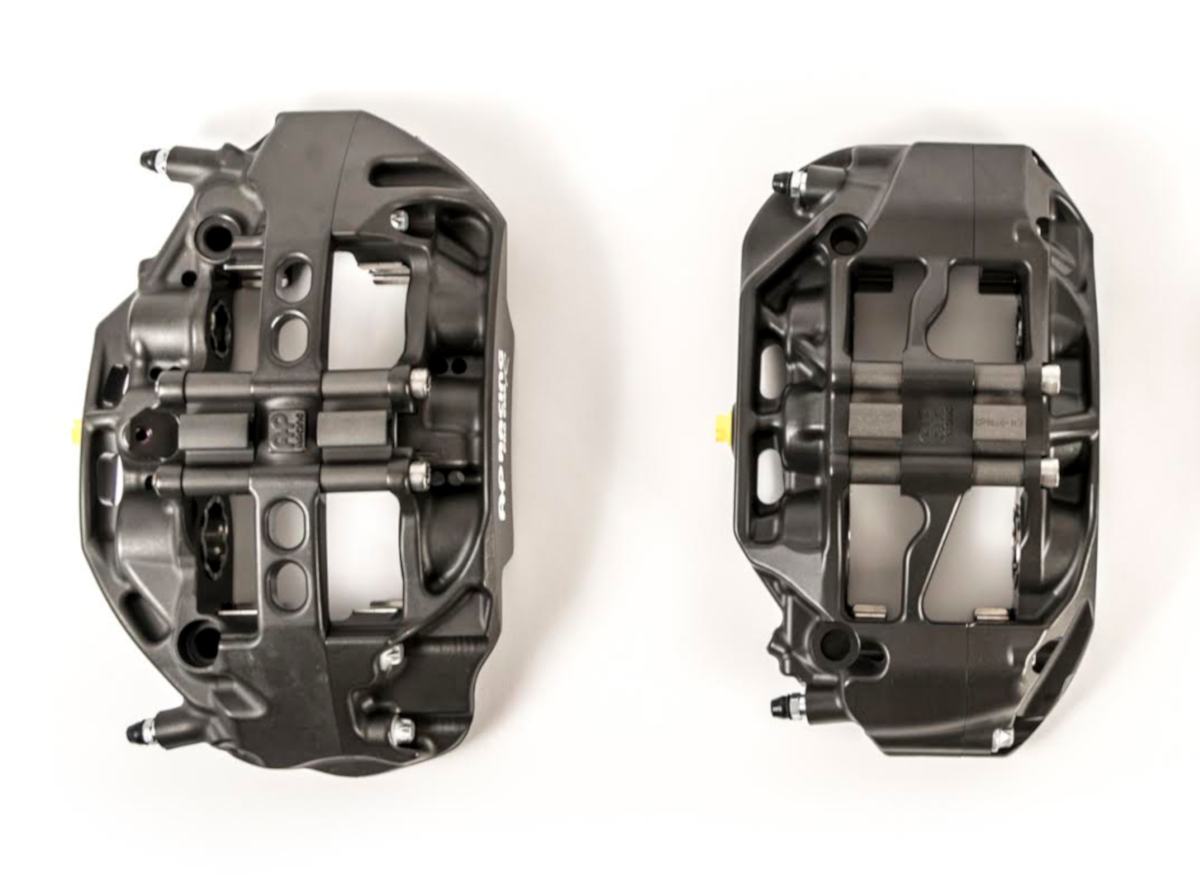
Installation drawings that show precise dimensions for both calipers can be found in the links below:
The photo below shows the CP9661 on the left and CP9669 on the right, this time in our Electroless Nickel Plated (ENP) finish.
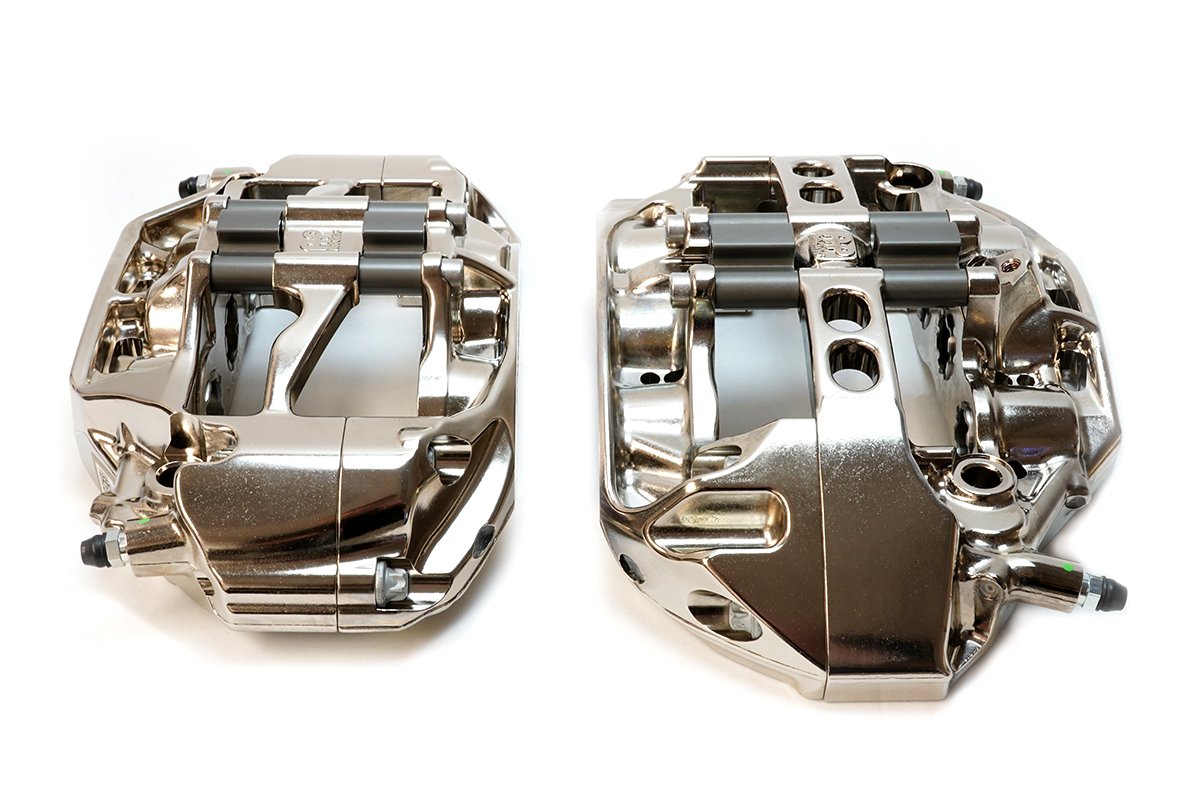
The additional width of the 9668/9 was implemented to allow for a thicker brake pad. The 9668/9 leverages a 25mm thick pad, while the 9660/1 accepts an 18mm thick pad. The pads from both calipers are shown side-by-side in the images below:
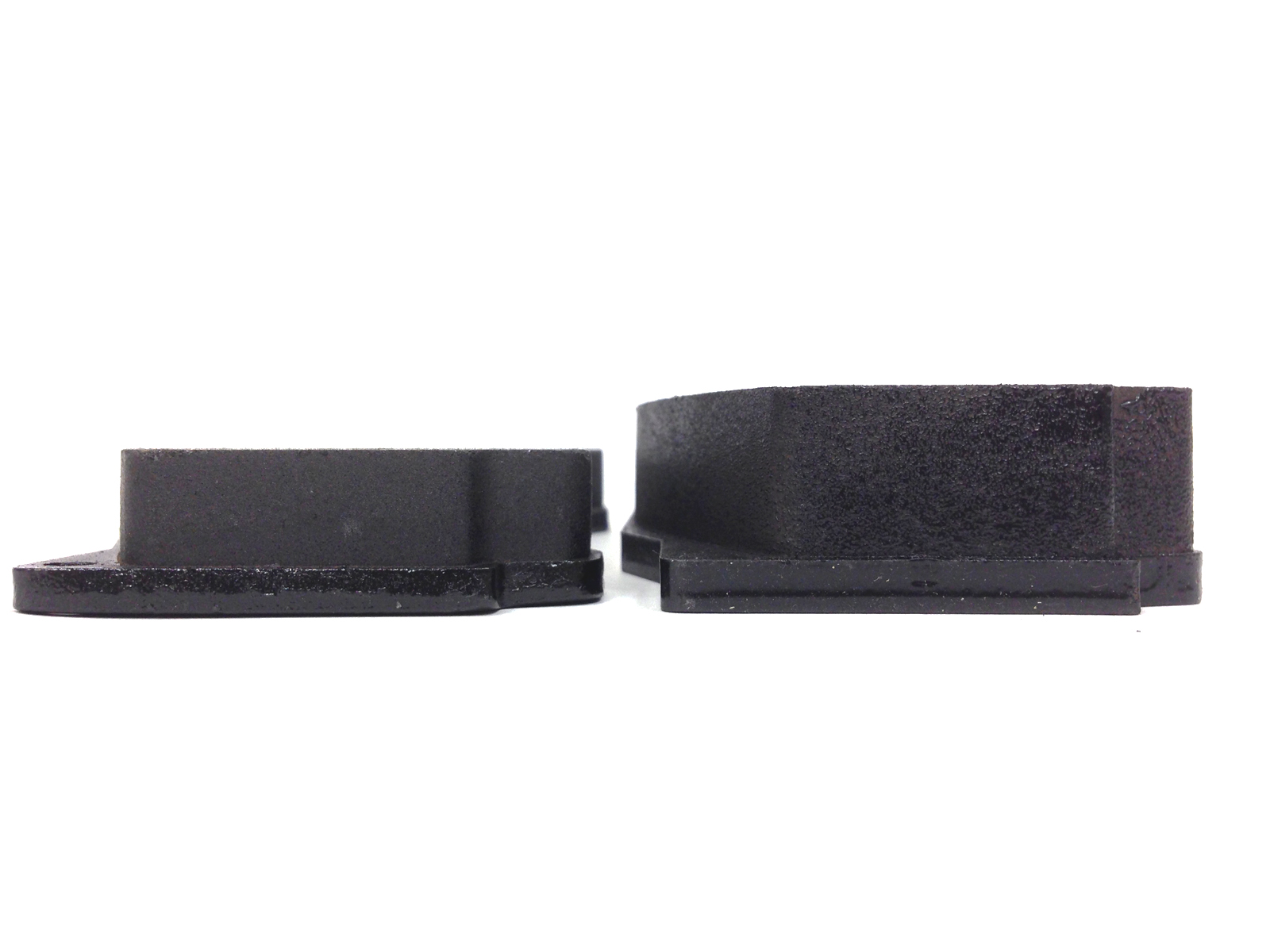
To give some sense of scale, here's what the CP9668/9 pads look like in-hand:
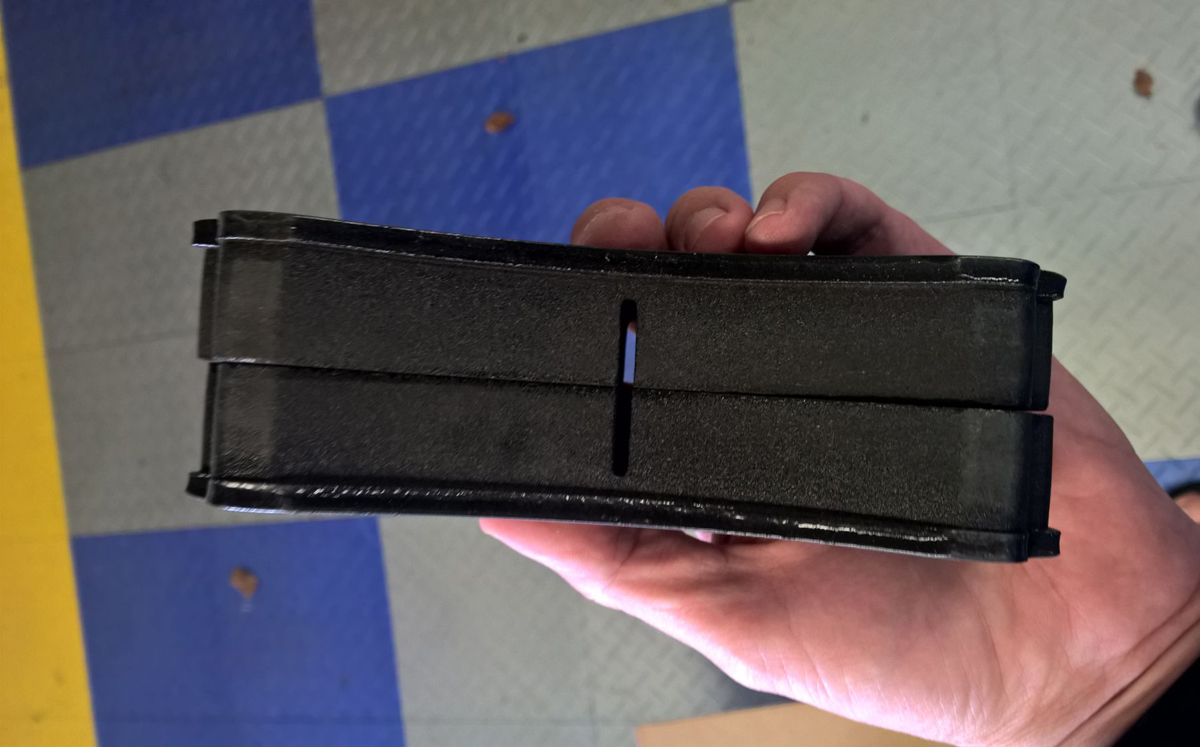
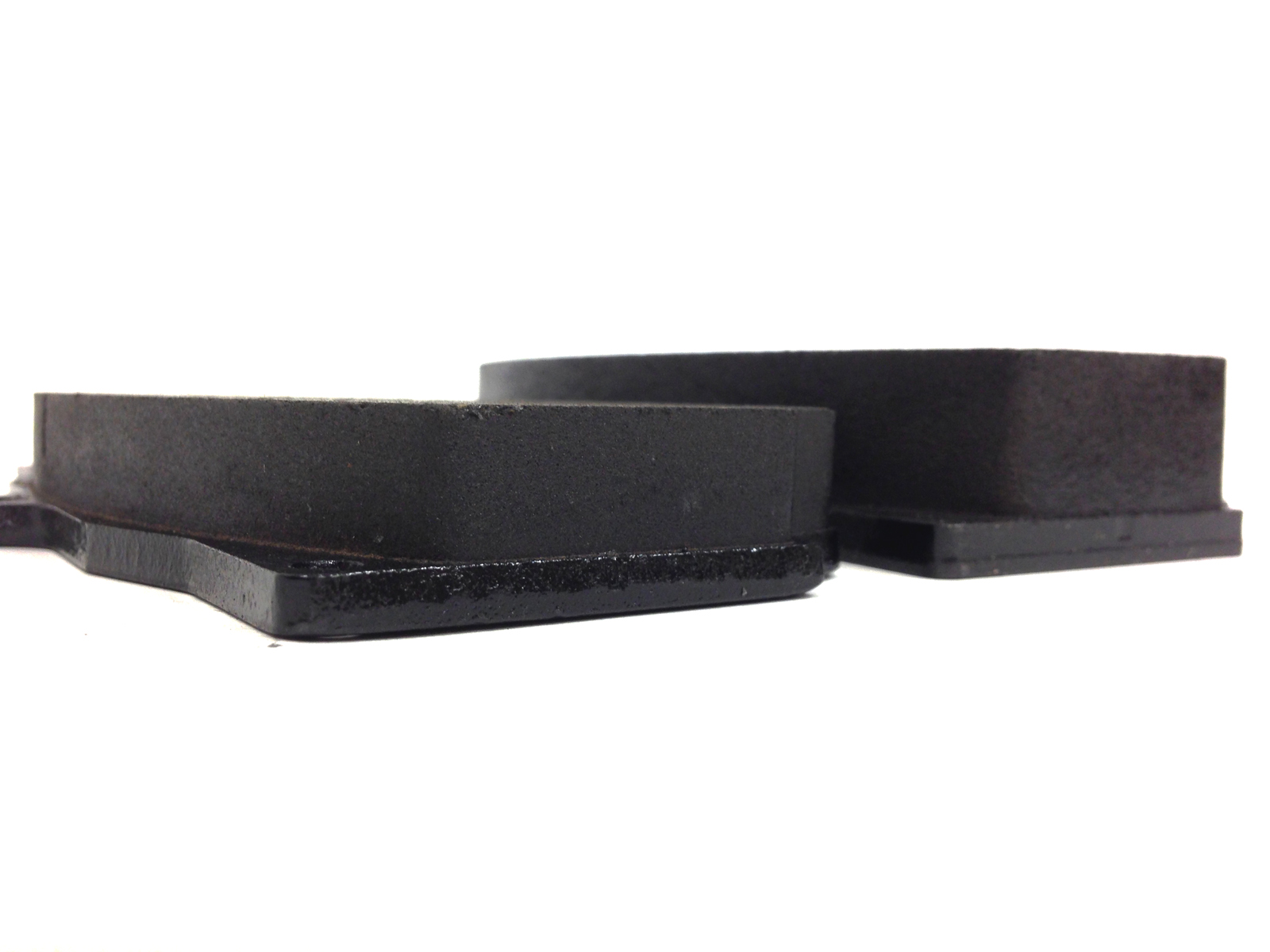
The 9668 also offers a quick-change spring clip bridge option (included in the box), which allows for pad changes without the use of hand tools, while the 9660's bridge requires the removal of two hex-head bolts.
CP9660 bridge with two hex-head bolts:
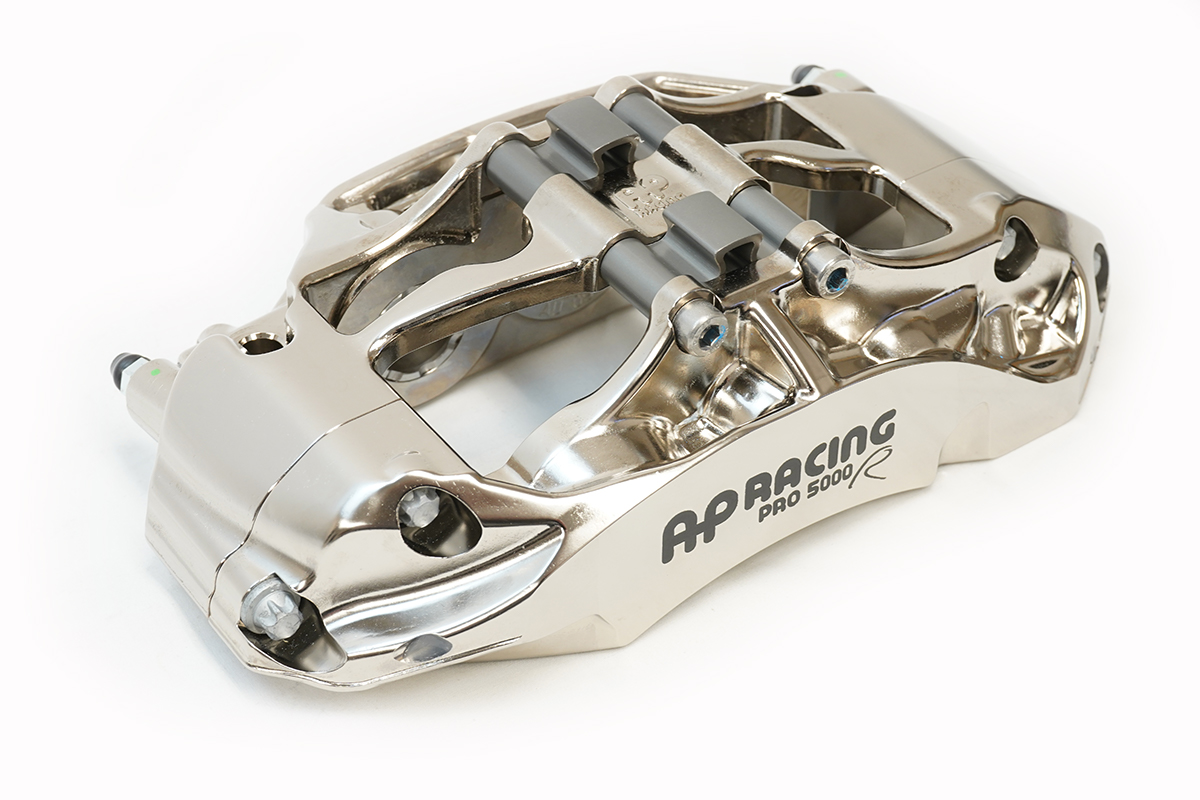
CP9668 quick-change spring clip installed (included in box with calipers). This particular bridge option is not suggested for our 394mm front disc kits. Instead we recommend our pad tension kit, which we include with our 394mm kits.
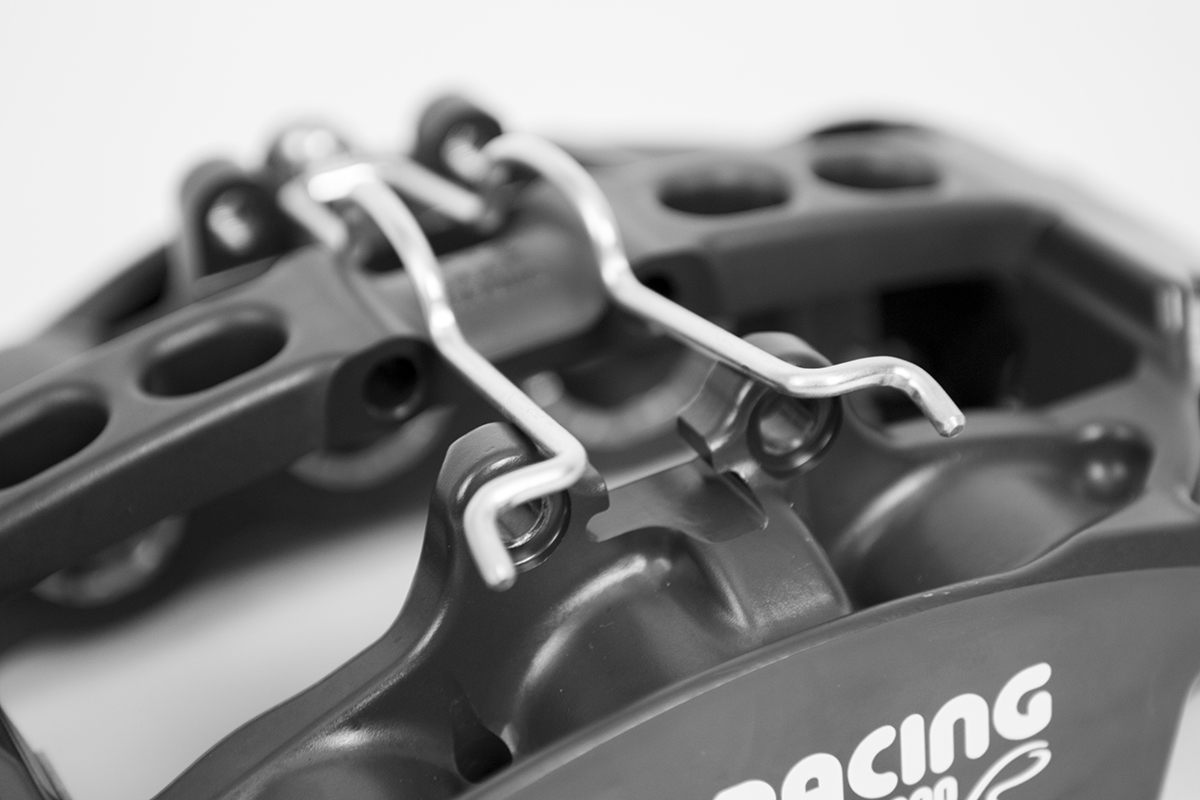
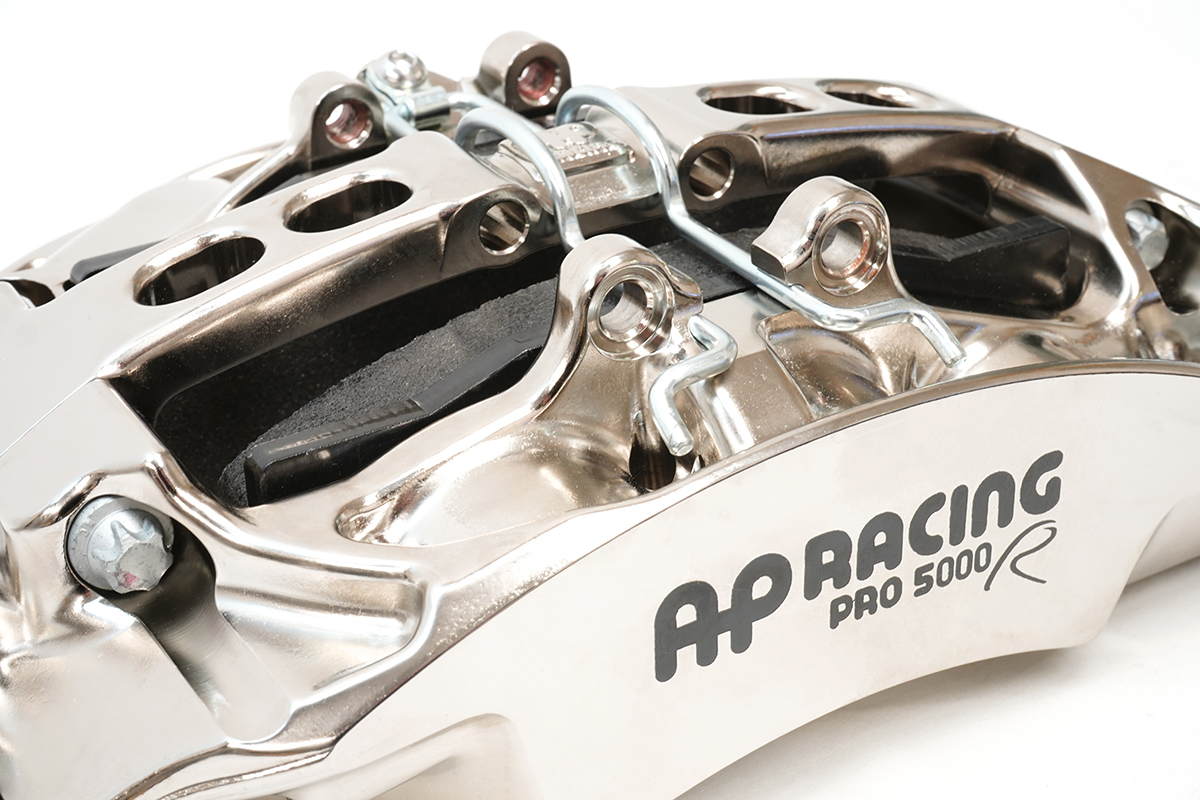
Practical Considerations for Caliper Choice
So that's it? For the most part, yes. Those are the primary design
differences between the two designs, but even those simple differences
dictate some practical considerations when deciding which is the best
option for your car.
Wheel Spoke Clearance
Essex has found that for our customers, the choice between the 9660 and 9668 frequently boils down to wheel choice. In many cases, the CP9660 isn't any wider than the caliper being removed from the car, particularly when that caliper is an opposed-piston fixed design. As such, one can often install our complete system behind existing wheels without any other modifications such as a wheel spacer or longer wheel studs. Conversely, the CP9668 is more likely to require wheels with a more accommodating spoke design, a wheel spacer, and/or extended wheel studs. If you already have these components on your car, then there aren't any additional cost ramifications. If you need to purchase these items to make the 9668 fit, you'll need to factor that into your decision.
Please note however, that the general rule of thumb does not always hold true. For some applications, the wider CP9668 fits behind the OEM wheel without requiring a spacer or any other modification (C7 Z06 for example). Fortunately, we offer a downloadable wheel fitment template like the one shown below for every Essex Designed Competition Brake Kit that we manufacture. To check the fitment template for the kit you're considering, scroll down past the add to cart button and the related products section on the product detail page, and you'll see a series of tabs running horizontally across the screen. Click on the one that reads, "WHEEL FITMENT & INSTALLATION".
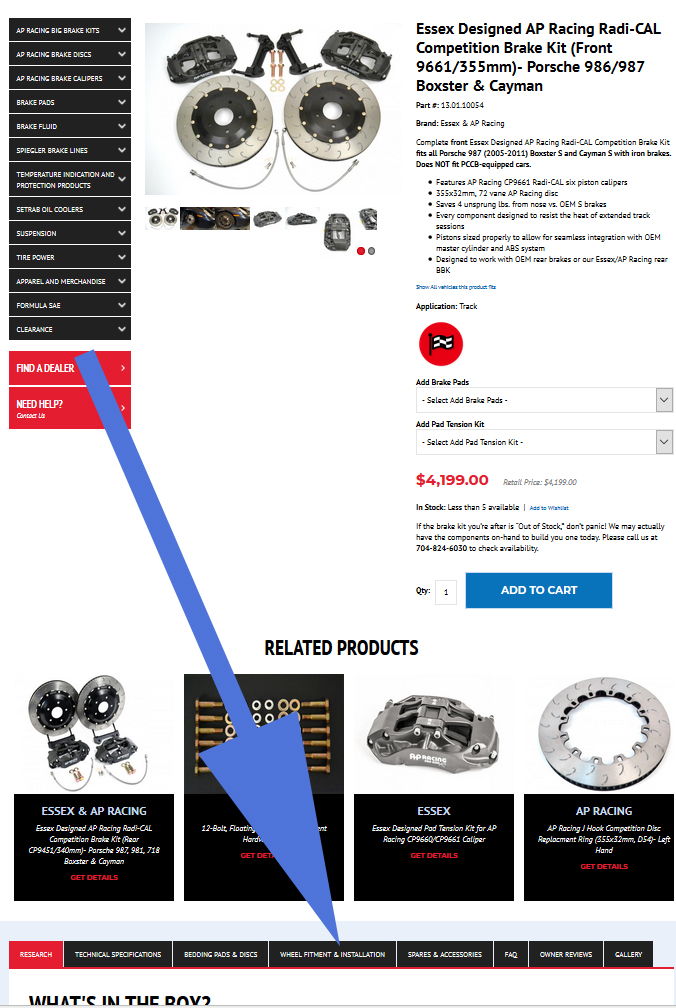
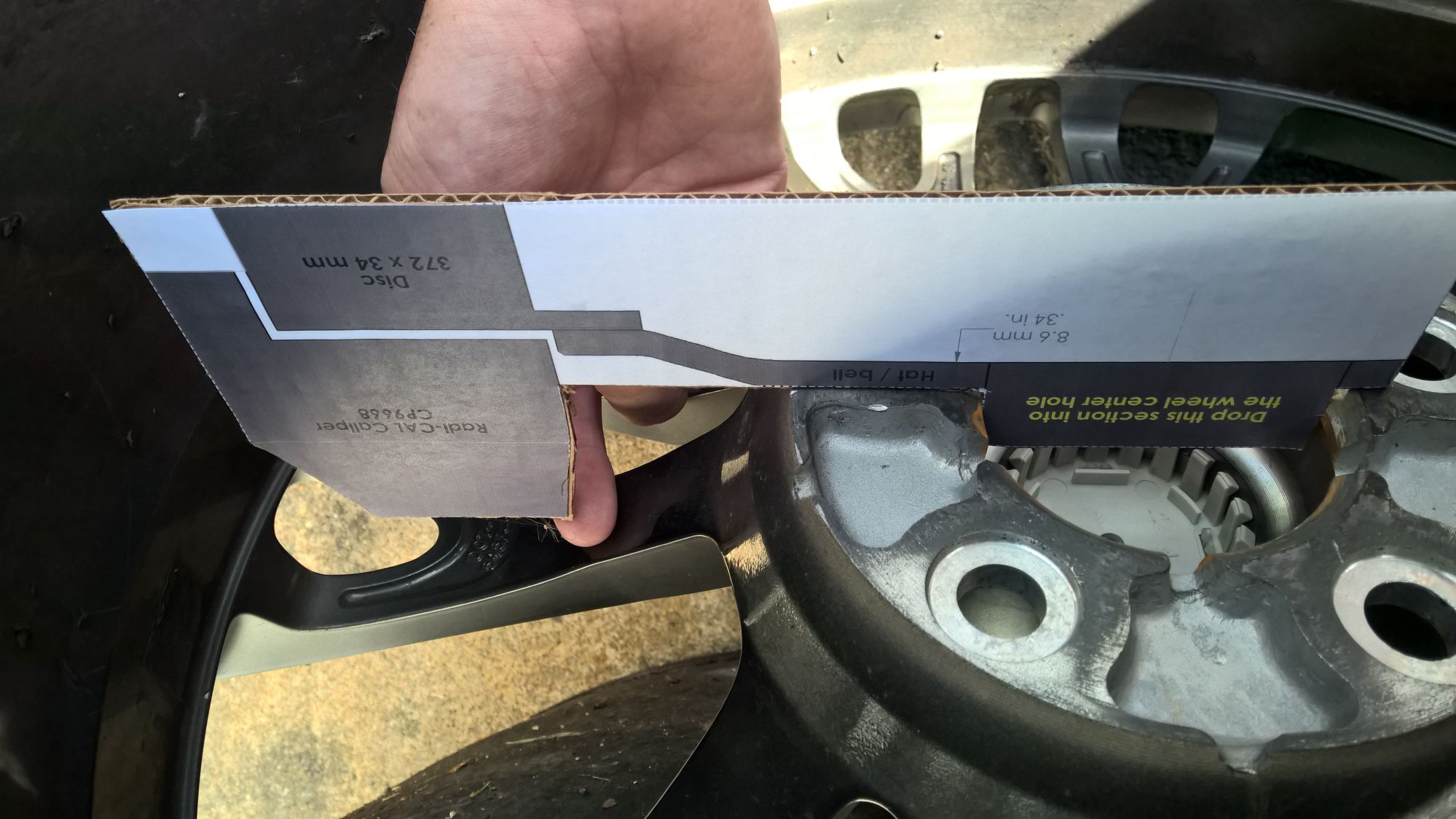
Length of Race or Track Session
The CP9668 was designed as an endurance racing caliper, hence the thicker 25mm pads and the quick-change bridge option. The pads in the 9668 will last longer, and they are quicker to change during a pit-stop. However, if you're running 20 minute HPDE sessions, the 18mm thick pads in the 9660 are going to be more than ample. While it's impossible to predict pad wear rates due to the huge number of factors involved, it's safe to assume that you'll get multiple days out of the 18mm pads in our 9660-based systems. The vast majority of OEM calipers actually use pads that are thinner than 18mm, so you're already going to have more pad thickness with the 9660 than you will with your OEM calipers. The 9668 simply adds a layer of overkill with the 25mm thick pads. For reference, the image below shows how the 25mm thick 9668 pads dwarf the 14mm thick 'padlets' from a C6 Z06 Corvette's OEM calipers.
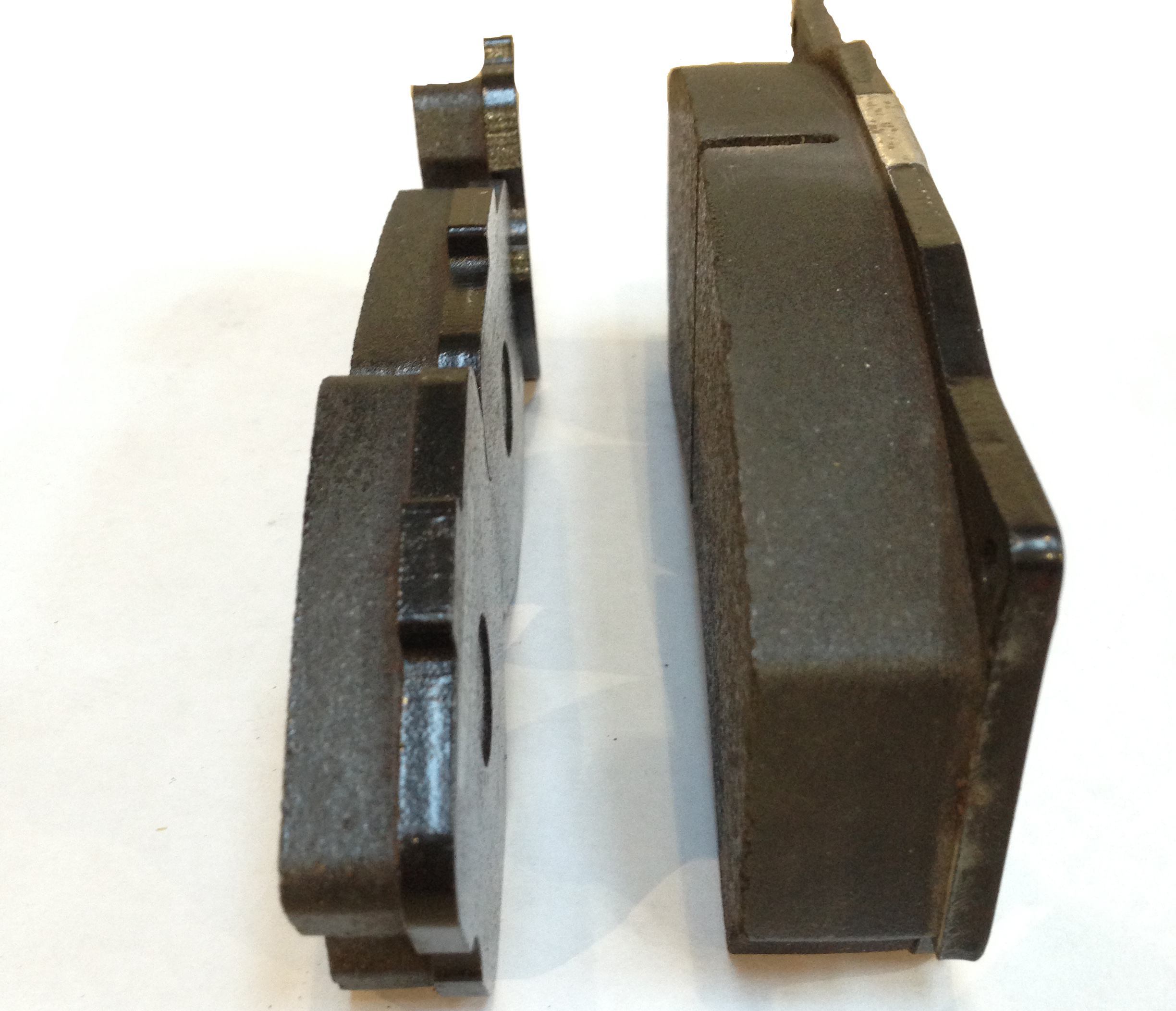
Pad Pricing
Pad pricing adds another wrinkle to the decision between the 9660 and 9668. While the 9668 caliper is slightly more expensive than the 9660 caliper, most pad manufacturers charge roughly the same price for their 18mm and 25mm thick versions of the pad shape used by both calipers. You'll therefore be getting roughly 40% more actual pad compound for the same or similar price.Since you're going to be changing the pads in the 9668 less frequently, the higher initial purchase price of a 9668 kit over a 9660 kit is going to be offset by pad cost savings. In other words, after the first couple of pad replacements, the longevity of the 9668 pads will neutralize the initial cost difference between the two kits.Pad Compound Options
The pad backing plate itself for both calipers is the same thickness, regardless of how much actual pad compound is stuck on the front of it. While you can't cram a 25mm thick pad into a caliper designed to accept an 18mm thick pad, the wider CP9668 will accept the 18mm thick pads in addition to the 25mm thickness. Installing the 18mm thick pads into the 9668 would simply be as if your 25mm pads were worn down 7mm at the time of install, so your pistons would just be extended a little bit. So in that regard, the CP9668 caliper would offer a bit more flexibility, as it can accept any of the 25mm pad sets using that backing plate shape, as well as all of the ones in 18mm thickness. Overall, you will tend to find the milder types of sport pads in the thinner 18mm thickness, while the thicker 25mm pad sets will many times be logically geared towards endurance racing.
Unsprung Weight
The 9660 weighs a svelte 6.1 lbs. (2.78 Kg), and the 9668 adds just a little more at 6.9 lbs. (3.1 Kg). Both choices are incredibly lightweight vs. competing six piston calipers, which are commonly in the 8-12 lbs. range. A typical pad for the 9660 weighs 1.3 lbs. Four of them (enough for both front calipers) weighs 5.2 lbs. Pads for the 9668 weigh approximately 2.0 lbs. each, so a full set weighs 8 lbs. Therefore, the difference in caliper and pad weights per front corner for the 9660 and 9668 works out to roughly 2.0 lbs.
If you're scraping for every ounce/gram of unsprung weight savings, the lighter 9660 is the winner. If the 40% thicker pads are worth the slight weight penalty to you, and longevity and budget concerns trump shaving hundredths of a second from your lap times, then the 9668 may be your proper choice (assuming they fit your wheels).
Summary
The statements below may help your thought process when making your caliper selection. These are common scenarios that we've repeatedly seen among our customers:
I'm running 20-40 minute wheel-to-wheel sprint races and want the lightest, most effective solution possible ---> Choose CP9660
I'm looking to remove every ounce of unsprung weight from my car ---> Choose CP9660
I don't really foresee having the budget for new wheels, and I don't want to deal with extended wheel studs and wheel spacers ---> Choose CP9660
I'm running multi-hour endurance races, and I want the most durable solution available ---> Choose CP9668
I would rather have longer pad wear at the expense of a slight weight penalty, and the 9660 and 9668 will both clear all of my wheel sets ---> Choose CP9668
I absolutely hate changing pads, and once the brake system is installed, I want to mess with it as little as humanly possible ---> Choose CP9668
The best news is that regardless of which Pro5000R Radi-CAL you choose, you win! AP's Radi-CAL is the current state-of-the-art in caliper design, and nothing else on the market comes close to offering similar features and benefits at any price point. Our AP Racing by Essex Radi-CAL Competition Brake Kits will forever change the way you view your track car's brakes
Below are some family photos of the Pro5000R caliper line. The CP9668 is in the foreground, the CP9660 in the middle, and the matching four piston rear CP94XX in the back.
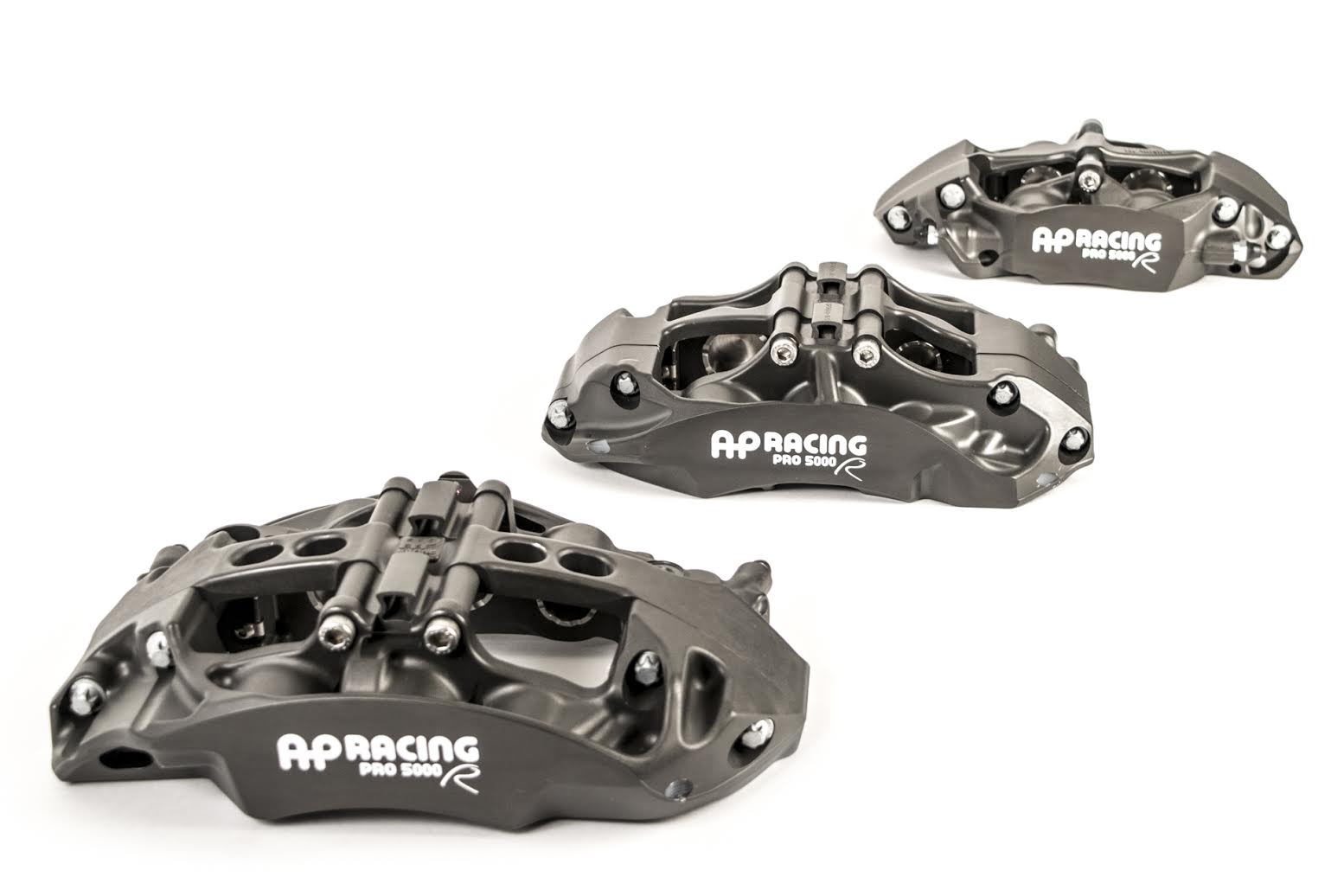
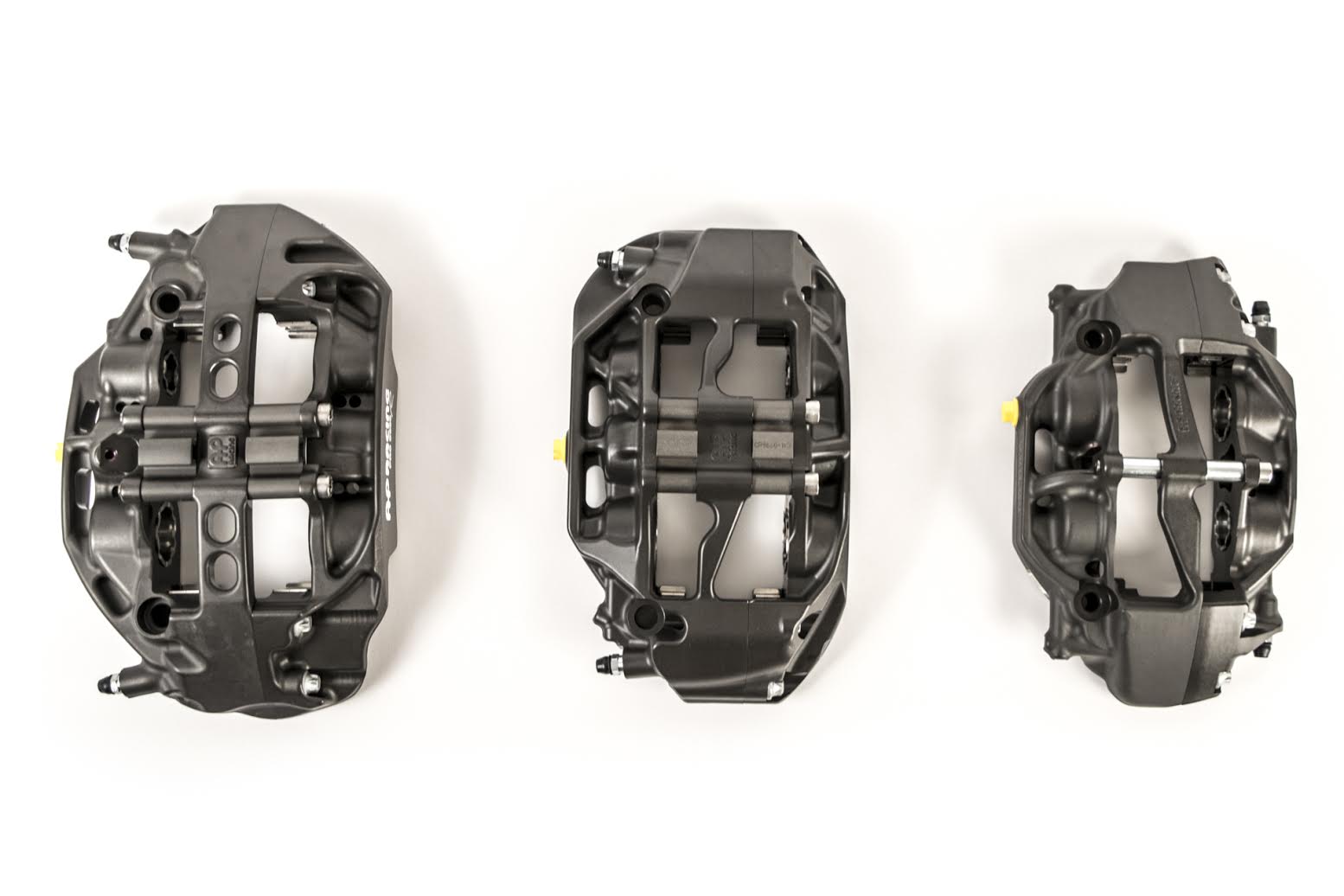

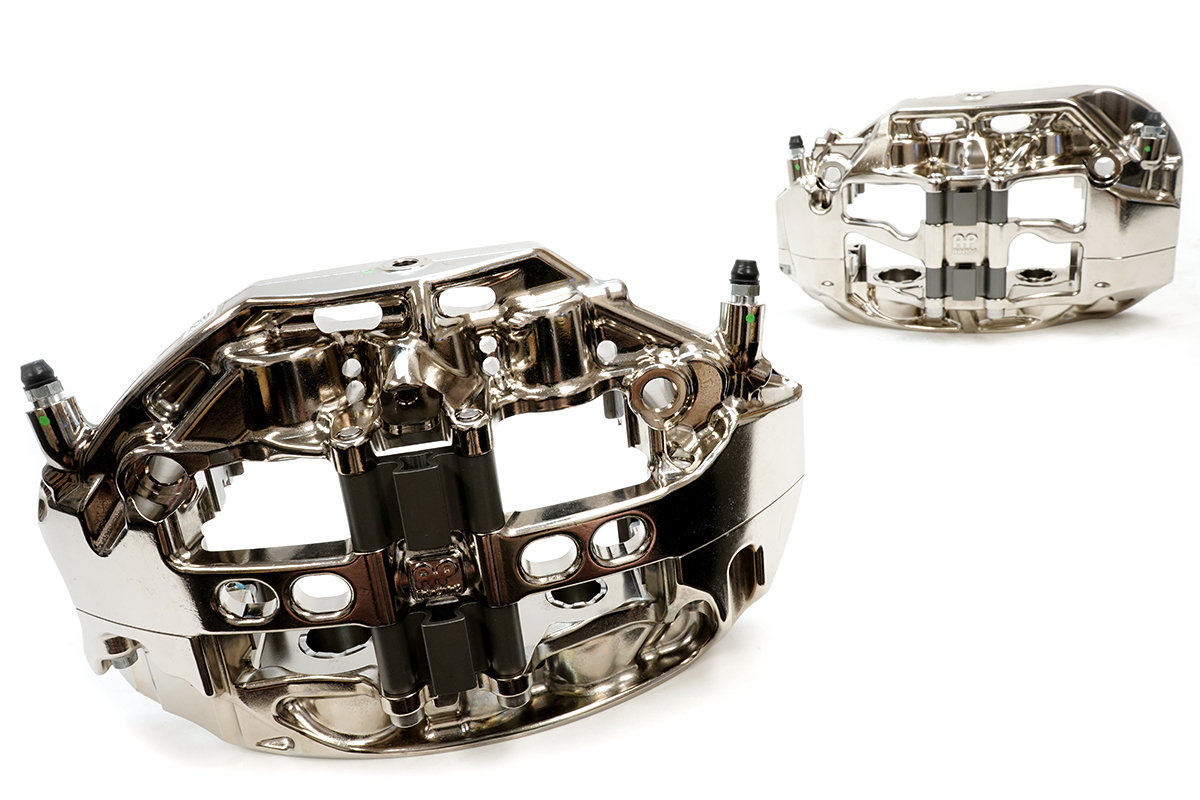
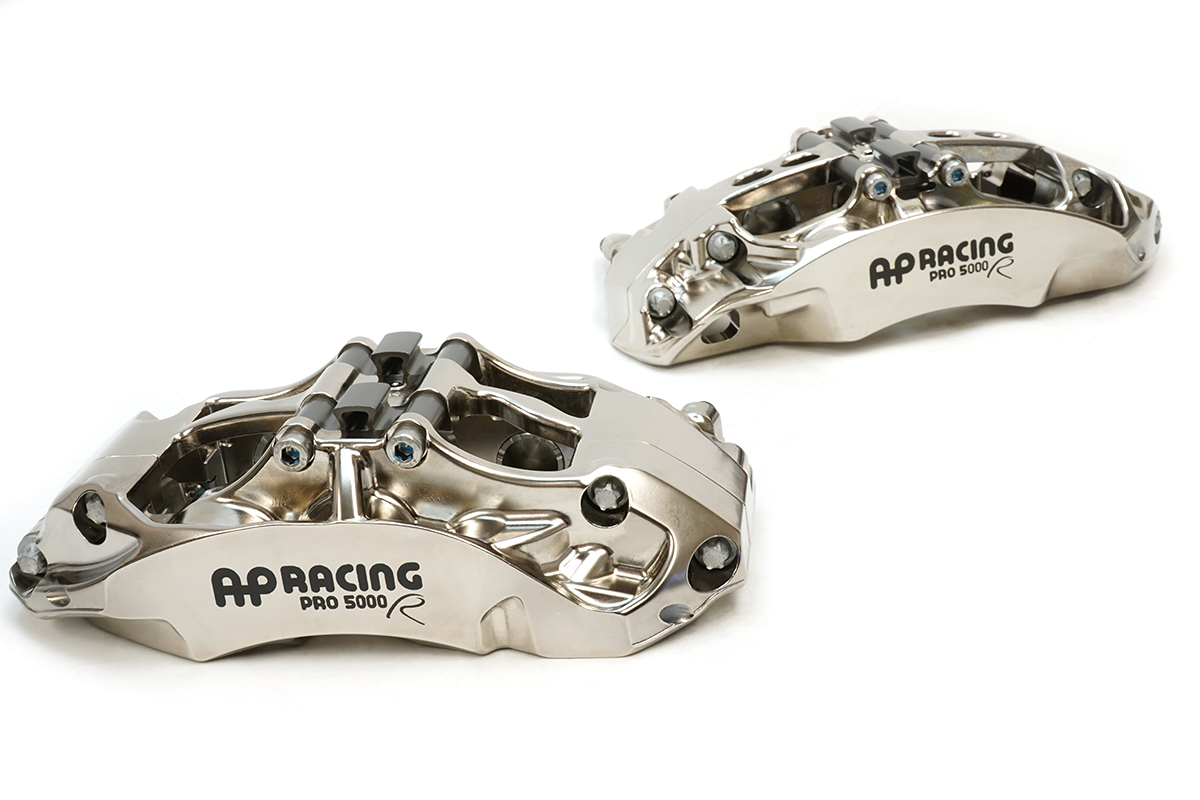
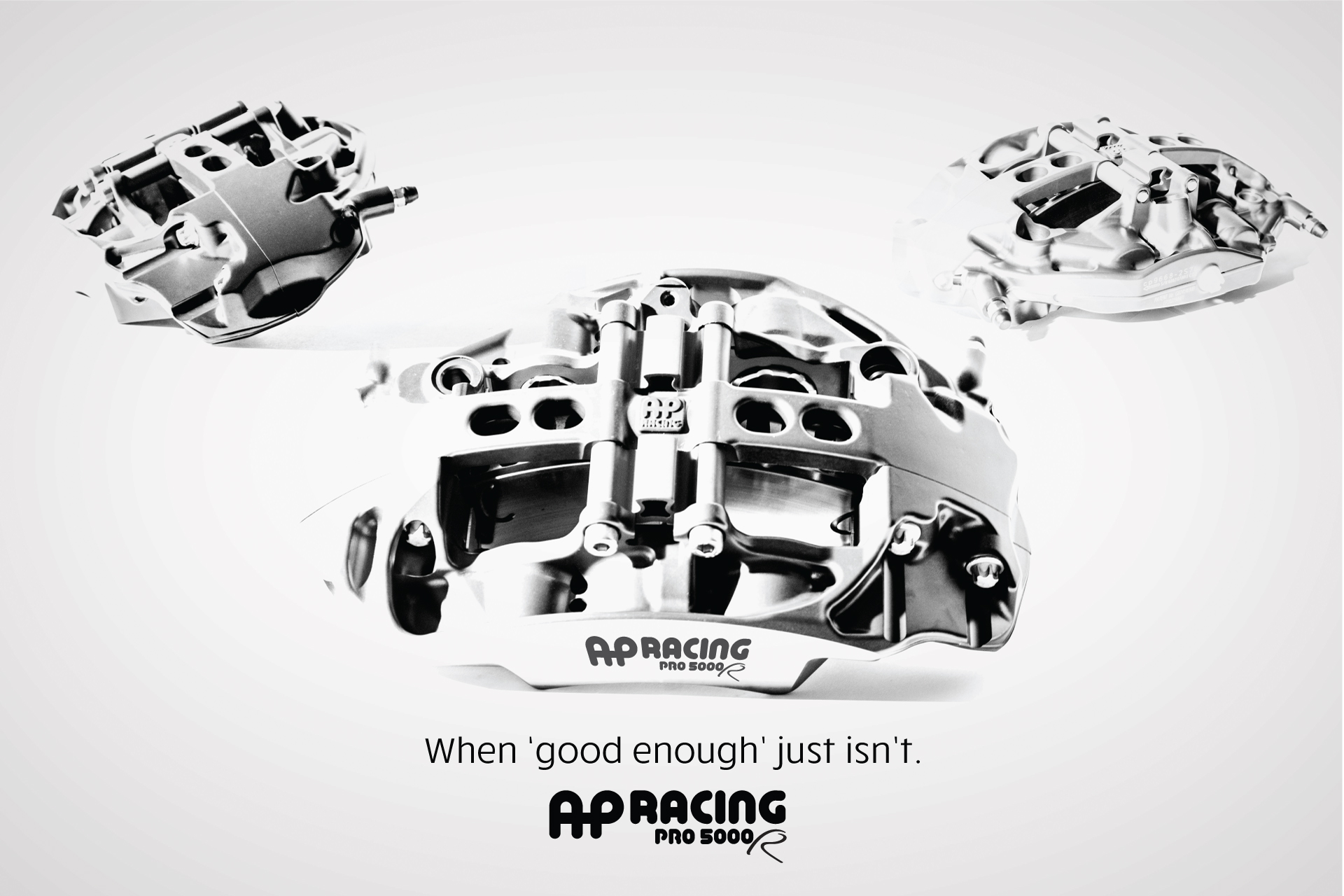
Written by Jeff Ritter





Customer Comments:
No comments posted yet
You must be logged in to leave a Comment